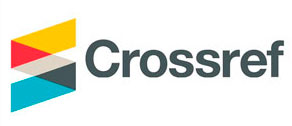URBAN ENVIRONMENT DESIGNING AS AN OPTIMIZATION PROBLEM
Abstract
The work substantiates the relevance of the topic, goals and objectives of the study, reviews the publications In the main part, the characteristics of the city are considered, which give grounds to define the urban environment as a complex open system consisting of subsystems of bionic and technical origin, the functioning of which is described by a large number of heterogeneous and partially non-formalized parameters and restrictions. Such features require the use of the C-space wave model as an apparatus for modeling the environment and the theory of self-organization of complex systems for solving the optimization problem. Within the framework of this paradigm, an optimization problem is formulated, goals, indicators and criteria of optimality, resources and limitations, a methodology for assessing intermediate and final results, and an optimization strategy are defined. First, the hierarchy of general, group and individual indicators is considered, which is due to the need for a coordinated organization of the general, group and individual spaces of the city. Further, the indicators are grouped according to the levels of human interaction with the surrounding spaces; the grouping is based on the scenario (1S, 1O) of self-organization of complex systems, which makes it possible to determine the theoretical values of the weighting coefficients of indicators. The composition is considered and data on the restrictions are given, which include the current regulations, the need to preserve the historical heritage, resource restrictions. Another optimization tool is specifications that define the main characteristics of comfortable living environments. The optimization results are evaluated by the method of expert evaluation. After the standard procedures of questioning and processing the results, calculations are made that follow from the theory of self-organization of systems. A 10-point general optimization sequence is given. It is noted that in some cases it is advisable to use classical optimization methods. An example is given. The conclusions assess the theoretical and practical significance of the results obtained and determine the directions for further research.
Key words: city environment, complex system, C-space wave model, self-organization theory, multicriteria optimization, expert assessment, decision support system, UAV.




